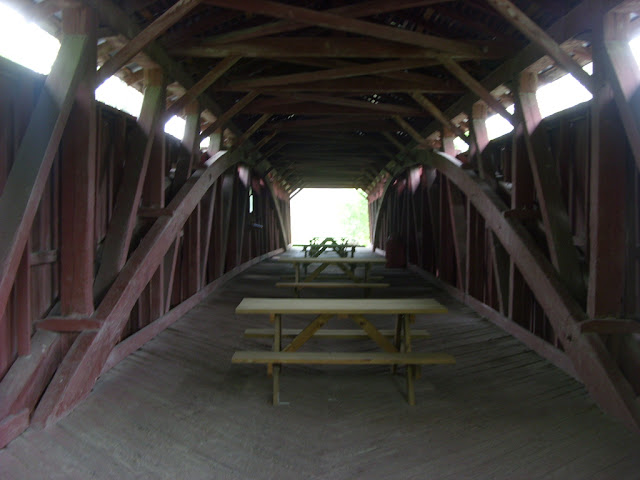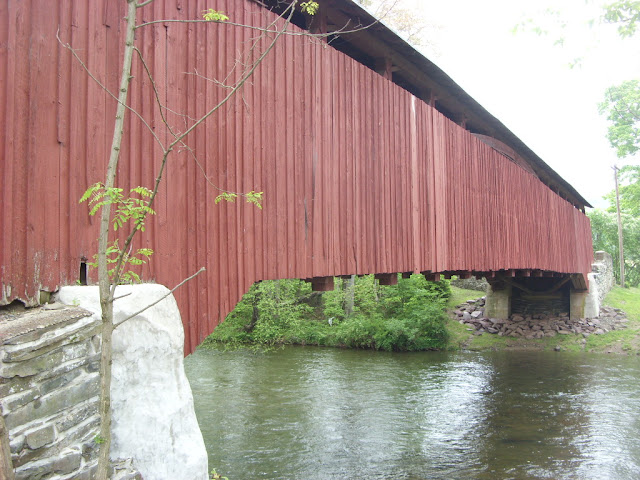The Stillwater Covered Bridge is one of 23 covered bridges found within the borders of Columbia County, Pennsylvania, which is the third largest concentration of covered bridges throughout the Commonwealth of Pennsylvania. Many of these covered bridges are located along Fishing Creek, north of Bloomsburg. This includes the Stillwater Covered Bridge, located in the Borough of Stillwater. Built in 1849 by local settler James McHenry, bridge construction of this 168 foot long covered Burr arch-truss designed bridge cost $1,124 to build. This bridge is now closed to motor traffic, but you can leisurely enjoy your time visiting the bridge or have a picnic inside of the bridge. While you can spot the bridge from PA 487, you can access the bridge through a couple of local streets on the east side of PA 487 in Stillwater.
 |
| Side profile of the Stillwater Covered Bridge. |
 |
| Inside the bridge. |
 |
| Bridge over Fishing Creek. |
 |
| Fishing Creek. |
 |
| Leaving the covered bridge on the narrow Paperdale Road. |
How to Get There:
Sources and Links:
Columbia County Covered Bridges - Stillwater Bridge
Bridgehunter.com - Stillwater Covered Bridge 38-19-21
Update Log:
November 20, 2021 - Crossposted to Quintessential Pennsylvania (https://quintessentialpa.blogspot.com/2021/11/stillwater-covered-bridge.html)


Comments